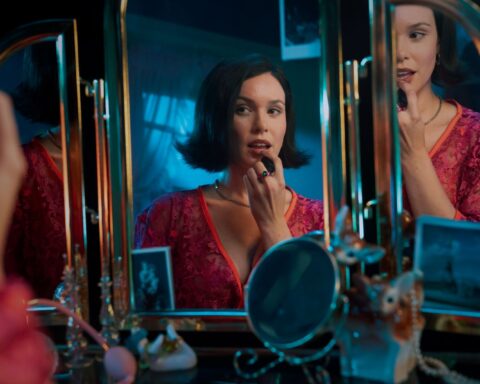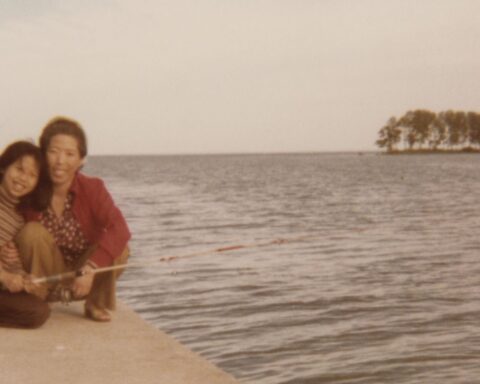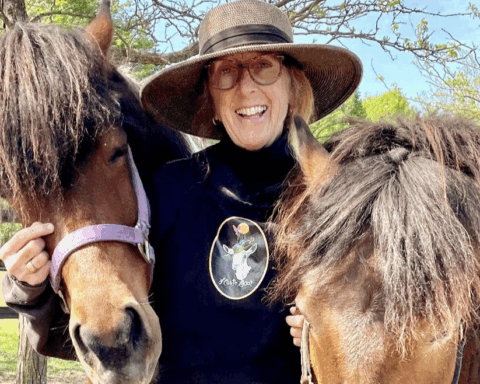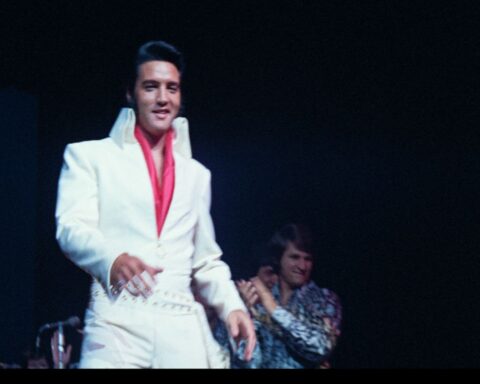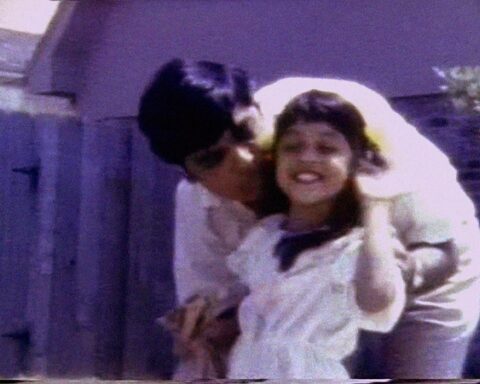Faces Places (Visages villages)
(France, 90 min.)
Dir. Agnès Varda, JR
Programme: Masters (Canadian Premiere)
Agnès Varda, effervescent photographer and iconic filmmaker (The Beaches of Agnes, The Gleaners and I ; La Pointe Courte; Cleo from 5 to 7; Mur Murs; One Sings the other doesn’t), and JR, young mysterious photographer and street artist (including the massive child looking over the border wall between Mexico and the US), are the unlikely and utterly charming couple whose road trips to villages and communities across France resulted in the beautiful documentary Faces Places (Visages Villages). With matching energy and joy, the pair discover, or rediscover, ignored and sometimes decaying landscapes, inquire about the people who live and work there, and install stunning large-scale images on the walls. The interviews with people before and after the pictures are taken, and the photographs of the ‘live’ people reacting to their murals provide us with new ways of thinking about seeing and being seen, about revealing oneself and about understanding one’s place in the world. This is a film that will make you smile as you contemplate the ways that Varda’s genius manifests itself.
The film opens with a sequence imagining all the places they did not meet: hitchhiking on a rural road; trying to buy the same pastries in a Paris bakery; dancing in a nightclub. JR approached Varda, who then met him and his team at his studio. A joint project was proposed and executed: they would travel together to rural villages, meet people, take their photos in his travelling camera/developer and then his crew would paste them on to walls. The road trip takes them all over France, to towns they don’t know, to places where they had each met someone in the past; to sites of old friends and memories.
The impact of the meetings on Varda and JR and especially on the people who are willing participants in the art project is profound. A woman who is the last resident in a row of miners’ houses slated for demolition is powerfully moved when she sees her own giant portrait on her house – among the towering images of the miners down the entire street. A worker on a goat farm reveals himself to be a poet and a gentleman as he acknowledges the giant goat, complete with horns, that now decorates the barn. The combination of words and images is a thread throughout the film. People who lead hard-working agricultural or industrial lives are sometimes speechless when they are shown the giant images of themselves or people dear to them, but more often have thoughtful commentary on what the images mean.
JR and Varda share a love for the people they meet, an appreciation for their occupations, a deep love for animals, and above all, respect for the villages and communities they visit. The road trip is both nostalgic and an opportunity to find new people and places. Varda, 88 in the film, continues to take joy in discovery while appreciating moments of reflection on departed friends. A former friend and one-time model of Varda’s, Guy Bourdin is pasted onto a former German bunker that was intentionally pushed off a cliff onto the beach. The 1954 portrait of a seated Bourdin is tilted to match the site and results, as Varda says, in an image of a man being cradled. Photos are taken of the installation; when Varda and JR return the next day, the tide has completely erased it. (Story told here en francais.)
JR introduces Varda to the men who work at the port of Le Havre, workers who had collaborated with him on a past project. She looks around and at first does not see the ‘village’; after all, the project is about villages not just visages. Then she invites the wives of the three men to come to the port to be photographed. As she interviews the women, we learn that they all have jobs that are in or around the port, just as their husbands do. Varda insists that the portraits be full-length, because the women deserve to be seen as entire human beings. Eventually the pictures are the size of several shipping containers. Varda’s determination that women be respected is not confrontational and JR certainly does not object; it simply is a reminder that gender visibility depends on women holding the camera.
The film is also a contemplation on eyes: the camera lens; the eyes of JR, hidden behind his dark glasses; the bright eyes of Varda, with their failing vision. A running joke has Varda complaining about the dark glasses that JR refuses to remove. She shows a film clip to demonstrate that she was even able to get Godard to remove his glasses for her. The visit to Godard’s home near the end of the film provides food for reflection on friendship, kindness, age and mortality.
The (im)permanence of the pictures that are produced – as photographs, as murals and as moving digital images – raises issues about the value of photography and film as evidence of the real world and the spirits that inhabit it. Faces Places ensures the immortality of ways of life, ways of being, and ways of seeing.
TIFF runs Sept. 7-17. Visit TIFF.net for more information.




